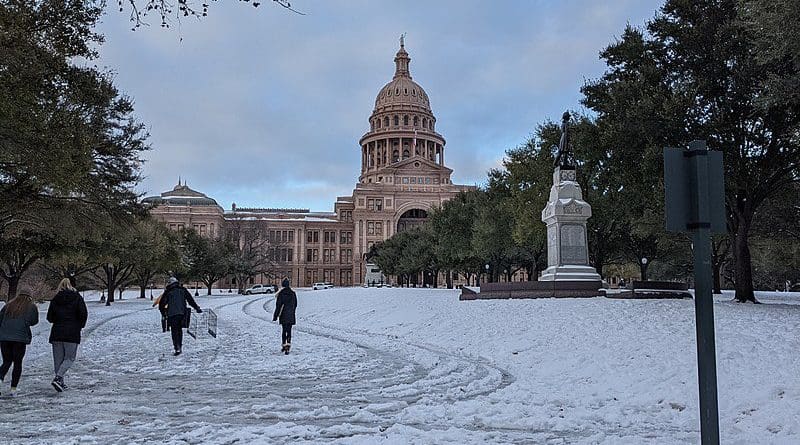Rapid Arctic Warming Likely Drives Extreme Winter Weather Events In US
Amid debate about the influence of changes in the Arctic on extreme weather elsewhere, a new study reports that rapid warming in the Arctic is a likely driver of the recent extreme winter weather in the United States.
The findings, based on both observational and modeling data, establish a physical link between anthropogenic climate change and a phenomenon called the stratospheric polar vortex (SPV) disruption. While climate warming is anticipated to lead to increases in some weather extremes, including heat waves and precipitation events, it’s not widely considered to drive severe winter weather events.
However, contrary to climate model predictions, winter weather extremes across the Northern Hemisphere – intense snowfall events and anomalous cold snaps – have reportedly become more frequent.
One notable example of this is the U.S. Southern Plains cold wave of February 2021, which resulted in the collapse of the Texas energy grid and record damages estimated at nearly USD 200 billion, a cost substantially higher than recent high-impact hurricanes.
It’s hypothesized that accelerated warming in the Arctic, or Arctic amplification (AA), is driving these events by disrupting the Arctic SPV – an atmospheric feature defined by the strong westerly winds that encircle the Arctic and, under normal conditions, keep its cold air contained.
Whether AA and its impact on the SPV variability are physically linked to recent winter weather extremes has been unclear; observations and model predictions lack agreement.
Building on previous work concerning SPV variability, Judah Cohen and colleagues combine observational analyses of the SPV over the last forty years with new climate model experiments. They reveal a physical link that implicates rapid Arctic warming and its effects, namely sea ice loss and increased Eurasian snow cover, with SPV disruption and the increased frequency of extreme mid-latitude winter weather.
The results could be used to extend the warning lead time of cold extremes in Asia, Canada, and the United States, the authors say.
“Future work should aim at further disentangling causal Arctic teleconnections for the cold and warm seasons in the mid-latitude regions, paying specific attention to high-impact extremes,” writes Dim Coumou in a related Perspective.

